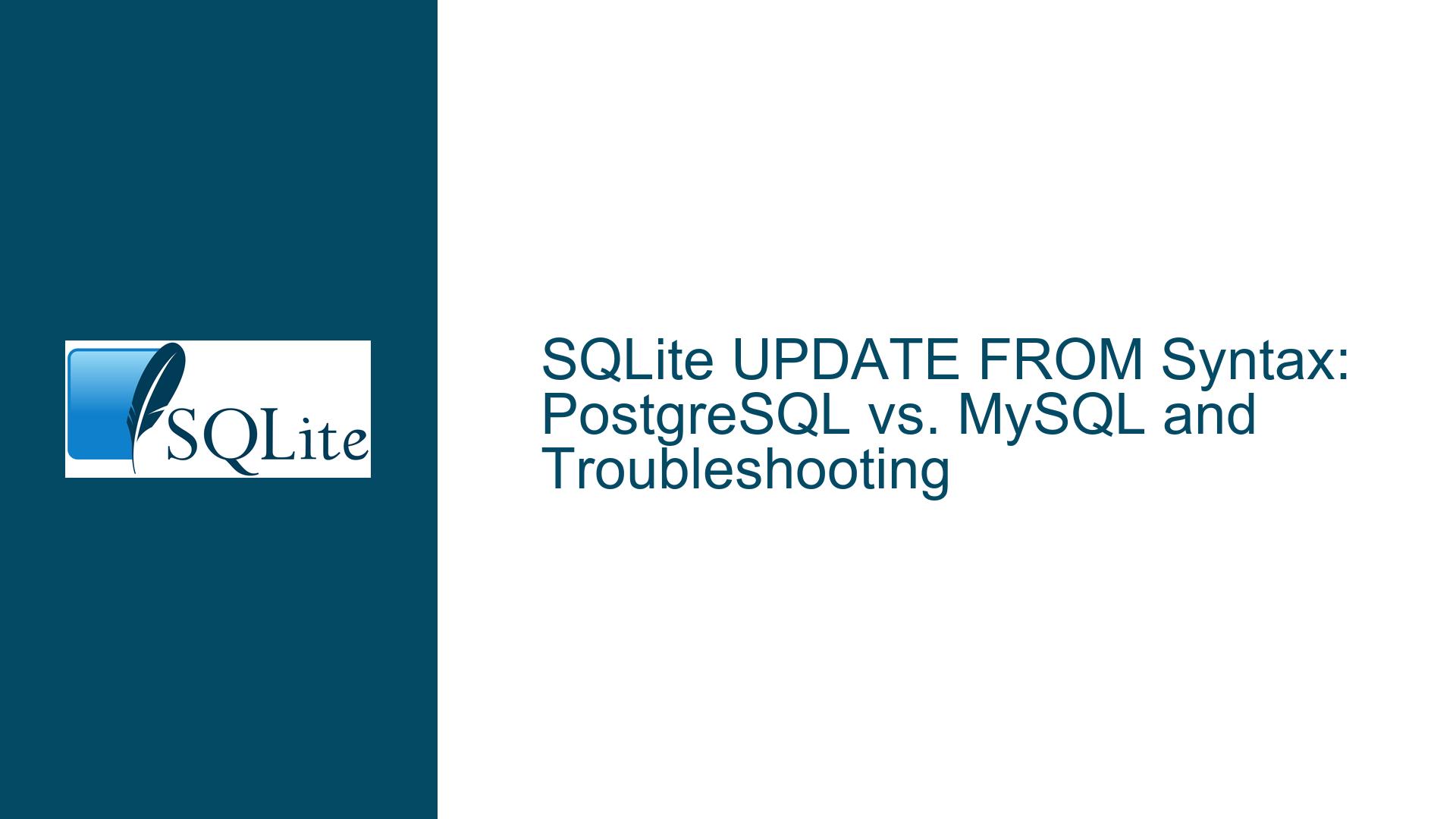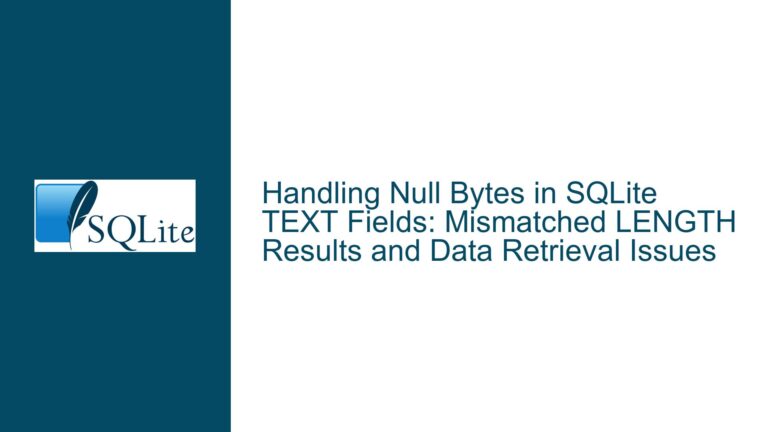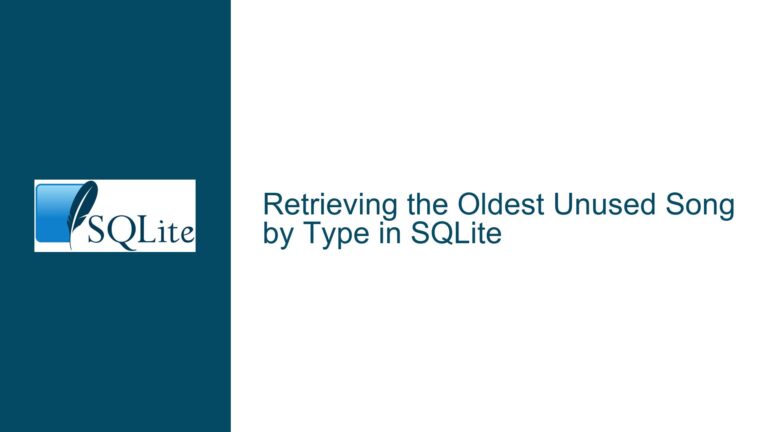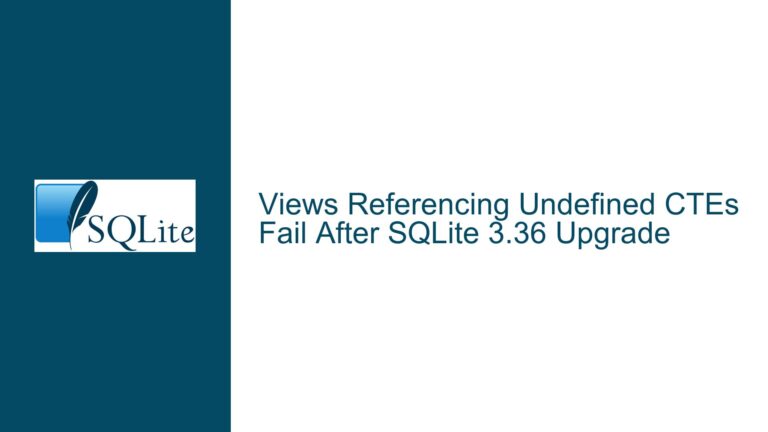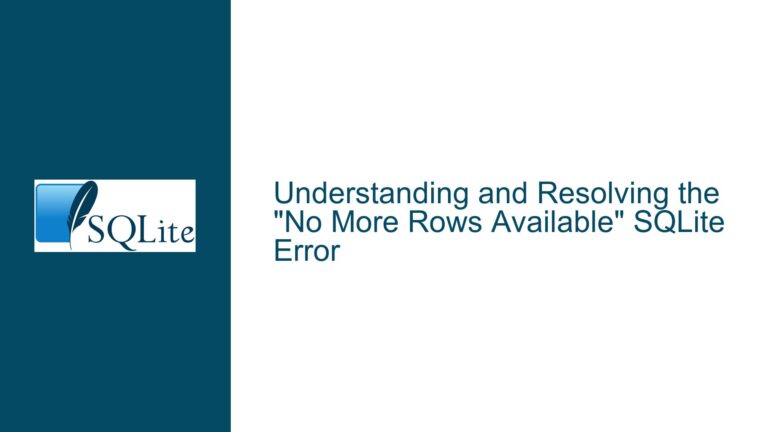SQLite UPDATE FROM Syntax: PostgreSQL vs. MySQL and Troubleshooting
SQLite’s Adoption of PostgreSQL’s UPDATE FROM Syntax
SQLite’s introduction of the UPDATE ... FROM ... syntax in version 3.33 has sparked a discussion about its alignment with PostgreSQL’s implementation and its divergence from MySQL’s approach. The UPDATE ... FROM ... syntax allows for updating a target table based on data from other tables, which is a powerful feature for complex data manipulation. However, the syntax differs significantly between PostgreSQL and MySQL, leading to confusion and debate about which approach is more intuitive and practical.
In PostgreSQL, the UPDATE ... FROM ... syntax does not require repeating the target table name in the FROM clause. For example, updating the inventory table based on aggregated data from the sales table would look like this:
UPDATE inventory
SET quantity = quantity - daily.amt
FROM (SELECT sum(quantity) AS amt, itemId FROM sales GROUP BY 2) AS daily
WHERE inventory.itemId = daily.itemId;
In contrast, MySQL’s syntax does not use a FROM clause at all. Instead, it allows joining tables directly in the UPDATE statement, which can be more intuitive for some users. The equivalent MySQL query would be:
UPDATE inventory JOIN
(SELECT sum(quantity) AS amt, itemId FROM sales GROUP BY 2) AS daily
USING(itemId)
SET inventory.quantity = inventory.quantity - daily.amt;
SQLite has chosen to follow PostgreSQL’s syntax for several reasons. First, SQLite has traditionally aligned with PostgreSQL’s syntax for contentious SQL language features. Second, PostgreSQL’s syntax is less verbose, as it avoids repeating the target table name in the FROM clause. Third, while SQL Server’s approach (which repeats the target table in the FROM clause) offers more control over the query, it does not provide new capabilities that PostgreSQL’s syntax lacks. Finally, MySQL’s approach, while powerful, allows updating multiple tables simultaneously, which is a rare use case and would require significant changes to SQLite’s UPDATE logic.
Potential Confusion and Compatibility Issues with UPDATE FROM Syntax
The adoption of PostgreSQL’s UPDATE ... FROM ... syntax in SQLite has raised concerns about potential confusion and compatibility issues, particularly for users familiar with MySQL’s syntax. The primary issue is the difference in how the FROM clause is interpreted. In PostgreSQL and SQLite, the FROM clause does not include the target table, whereas in MySQL, the target table is included in the join.
This difference can lead to confusion when migrating queries from MySQL to SQLite. For example, a MySQL query like:
UPDATE items, month SET items.price = month.price WHERE items.id = month.id;
Would need to be rewritten in SQLite as:
UPDATE items
SET price = month.price
FROM month
WHERE items.id = month.id;
This rewrite is not immediately obvious to users accustomed to MySQL’s syntax, and it can lead to errors if not done correctly. Additionally, the lack of a FROM clause in MySQL’s syntax can make it more intuitive for users who are not familiar with PostgreSQL’s approach.
Another potential issue is the use of Common Table Expressions (CTEs) with the UPDATE ... FROM ... syntax. While CTEs are a powerful feature for organizing complex queries, their interaction with the UPDATE ... FROM ... syntax can be tricky. For example, consider the following query:
WITH daily AS (
SELECT sum(quantity) AS amt, itemId FROM sales GROUP BY 2
)
UPDATE inventory
SET quantity = quantity - daily.amt
FROM daily
WHERE inventory.itemId = daily.itemId;
This query works in PostgreSQL and SQLite, but it may not be immediately clear to users how to structure the CTE and the UPDATE statement together. This can lead to errors or inefficient queries if the CTE is not used correctly.
Best Practices for Using UPDATE FROM in SQLite
To avoid confusion and ensure compatibility when using the UPDATE ... FROM ... syntax in SQLite, it is important to follow best practices and understand the nuances of the syntax. Here are some key recommendations:
Understand the PostgreSQL Syntax: Since SQLite has adopted PostgreSQL’s
UPDATE ... FROM ...syntax, it is important to familiarize yourself with how PostgreSQL handles this feature. This includes understanding that the target table is not repeated in theFROMclause and that theWHEREclause is used to join the target table with other tables.Rewrite MySQL Queries Carefully: When migrating queries from MySQL to SQLite, take care to rewrite the
UPDATEstatements correctly. This involves removing the target table from the join and using theFROMclause to specify the additional tables. For example, the MySQL query:UPDATE items, month SET items.price = month.price WHERE items.id = month.id;Should be rewritten in SQLite as:
UPDATE items SET price = month.price FROM month WHERE items.id = month.id;Use CTEs Effectively: Common Table Expressions (CTEs) can be a powerful tool for organizing complex queries, but they should be used carefully with the
UPDATE ... FROM ...syntax. Ensure that the CTE is structured correctly and that theUPDATEstatement references the CTE appropriately. For example:WITH daily AS ( SELECT sum(quantity) AS amt, itemId FROM sales GROUP BY 2 ) UPDATE inventory SET quantity = quantity - daily.amt FROM daily WHERE inventory.itemId = daily.itemId;Test Queries Thoroughly: Before deploying queries that use the
UPDATE ... FROM ...syntax in a production environment, test them thoroughly to ensure they work as expected. This includes testing with different data sets and edge cases to ensure the queries are robust and efficient.Consider Using Triggers or Upserts: In some cases, it may be more appropriate to use triggers or upserts (INSERT … ON CONFLICT …) instead of the
UPDATE ... FROM ...syntax. Triggers can be used to automatically update tables based on changes to other tables, while upserts can be used to handle conflicts when inserting data. For example, a trigger could be used to update theinventorytable whenever a new sale is recorded:CREATE TRIGGER update_inventory AFTER INSERT ON sales BEGIN UPDATE inventory SET quantity = quantity - NEW.quantity WHERE itemId = NEW.itemId; END;Monitor Performance: The
UPDATE ... FROM ...syntax can be powerful, but it can also be resource-intensive, especially when dealing with large datasets. Monitor the performance of your queries and consider optimizing them if necessary. This may involve indexing the columns used in theWHEREclause or breaking the query into smaller, more manageable parts.
By following these best practices, you can effectively use the UPDATE ... FROM ... syntax in SQLite while avoiding common pitfalls and ensuring compatibility with other database systems. Whether you are migrating queries from MySQL or writing new queries from scratch, understanding the nuances of this syntax will help you write more efficient and maintainable SQL code.
